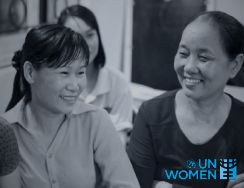Timor-Leste
| Date of Accession/ Ratification: | 16 April 2003 (acceded) |
| Reservations: | None |
| Optional Protocol: | 16 April 2003 (acceded) |
| Reporting Status: | - Initial report submitted at 44th session, July 2009 |
| Shadow reports | NGOs Alternative Report submitted by NGOs Working Group on CEDAW Alternative Report |
| Concluding Observations | From initial report at 44th session |
| Follow-up reports | Follow-up state report for initial session |
| Coordinating Agency for CEDAW implementation: | Secretary of State for the Promotion of Equality Centre of Studies for Peace and Development (CEPAD) Secretary of State for the Promotion of Equality (SEPI) |
Timor-Leste (formerly known as East Timor), is one of Asia’s poorest countries, ranking 134 out of 187 countries and territories on the Human Development Index, falling below the medium human development average.; and 111 out of 187 countries in the Gender Inequality Index. While progress has been made on MDG indicators surpassing 4 targets on infant and under-5 years mortality rates, proportion of women in the Parliament and tuberculosis cases detected and cured, TL lags behind in the following areas: 41 of its population live below the poverty line, 53% and 52% of children are stunted and underweight, maternal mortality ratio is 557 per 100,000 live births and 69% (in 2010) of its population lack access to sanitation[1]. It came under Indonesian control in 1975. After a UN-sponsored vote for independence in 1999, the country was engulfed by conflict - an estimated 75 per cent of the population was displaced by an orchestrated campaign of violence carried out by loyalist militia groups. The conflict was halted by an international peacekeeping force that led to the transfer of authority to the UN known as the United Nations Transitional Administration in East Timor (UNTAET).
In 2001, the newly-elected Constituent Assembly and Council of Ministers formed a transitional government to lead the country in the interim period before becoming a fully sovereign state. In 2002, the first constitution was signed into force, followed by the election of Xanana Gusmão as president and the swearing in of the very first government of Timor-Leste.
The amendment in the provision of the electoral law (2006) stated it is compulsory to include at least one woman for every group of three candidates (Article 12, Section 3 if No. 6/2006 on the Election of National Parliament) has fast-tracked women’s representation. This is in addition to the strong advocacy of the women’s groups led by Rede Feto. Timor-Leste has one of the highest proportions of women parliamentarians in the world and the highest in the Asia-Pacific region. Women hold a 38% share of the 65 parliamentary seats. (2012)[2]. In 2010, the Law against Domestic Violence was passed, making domestic violence a punishable public crime alongside with improvements in the areas of health and education, and criminalising such crimes as a violation to bodily security. Timor Leste has also adopted a Labour Code to ensure equality between men and women, including equal pay and paid maternity leave. While Timor Leste has implemented avenues for women to attain access to justice by bringing cases of discrimination to courts, this procedure is hindered with rates of illiteracy, language barriers, traditional justice systems, legal costs and a lack of information and assistance in pursuing their rights. Women remain entrenched in cultural norms which subject them to traditions of forced and early marriage, polygamy and dowry. This hinders women’s opportunities to pursue education, employment and economic empowerment, which further influences the rates of pregnant girls dropping out of school. Sexual harassment and violence in schools remains an issue. The number of reported cases fell from 46 in 2010-2011 (including 10 of sexual violence) to 27 in 2011-2012 (9 of sexual violence). Most cases are settled outside of the formal system through traditional mediation methods.[3] The trafficking and exploitation of prostitution continues to persist and there is a lack of data available to measure and counter these issues.
Fertility rates are among the highest in the world[4] and compounded with poor health services, this has contributed to extremely high maternal mortality ratio (557 per 100,000 live births or 69% (in 2010) and child mortality rates. This is particularly concerning for women in rural areas who have limited access to adequate pre-natal and post-natal care services. Consequently, many women in rural areas give birth at home, and there are high rates of maternal mortality related to the practice of illegal and unsafe abortions. There are also high rates of unemployment, and work is often concentrated within the informal sector agriculture which is associated with low income earnings and instability. Poverty also continues to affect women living in mountainous and highland areas, women heads of families, widows and the elderly. More information at CEDAW in Action - Timor-Leste.
[1] 2013 Timor-Leste MDG progress report and Demographic Health Survey 2009/2010
[2] Country Gender Assessment , 2014
[3] Country Gender Assessment , 2014)
[4] On average a women will have six children in her lifetime
Latest news
At a glance

Getting to know more about CEDAW and the Regional Programme in Southeast Asia | CEDAW Brochure